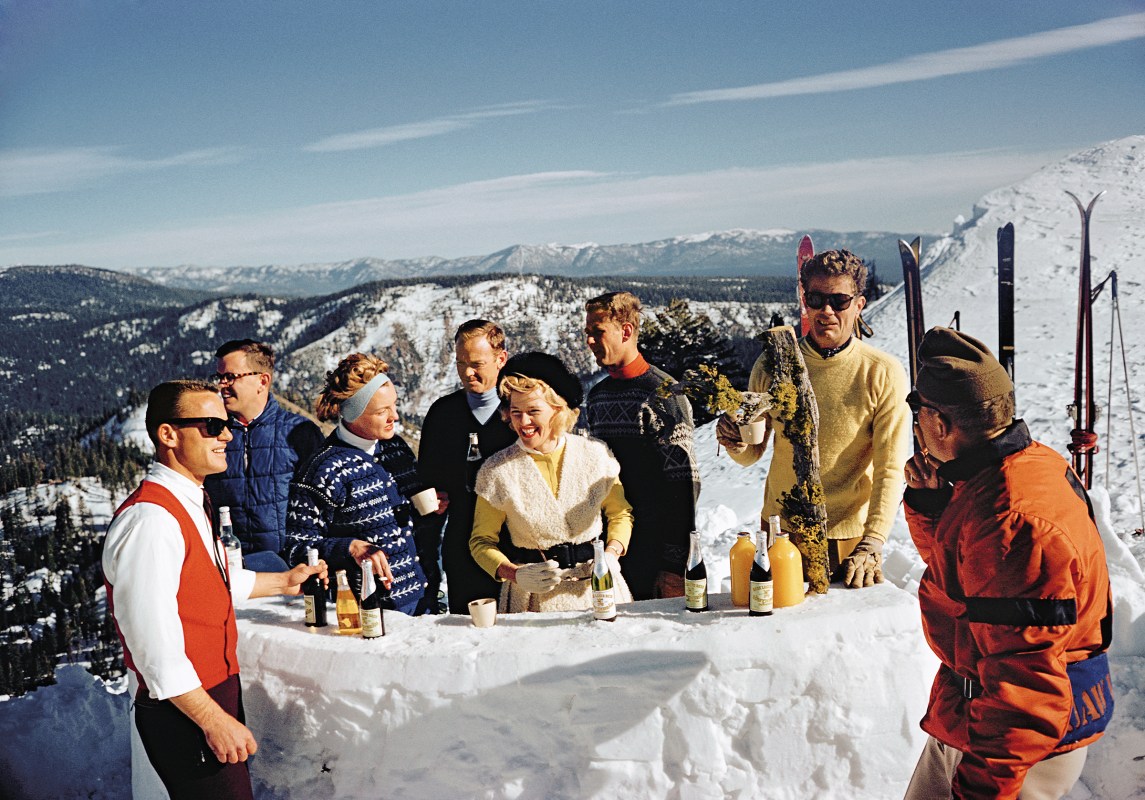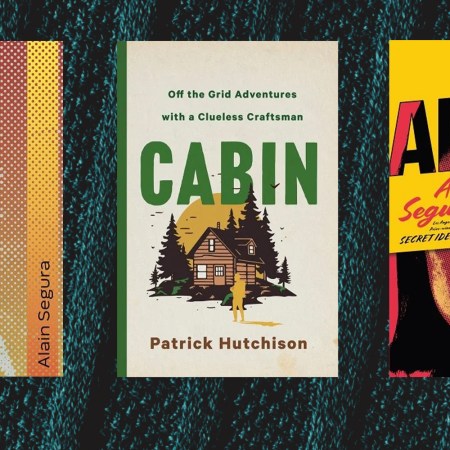There’s the side of photographer Slim Aarons — the “opulent world” he documented as the de facto chronicler of the post-war jetset — that he’s most famous for. And then there’s the other side, which is everything else about the man born George Allen Aarons, who grew up poor and Jewish on the Lower East Side, a far cry from the WASP-y, old-money types he shot on the ski slopes or in their Palm Beach mansions.
As Shawn Waldron sees it, Aarons’s recent rise in popularity thanks to social media platforms like Instagram has obscured a larger part of his legacy. “Most of the celebrated pictures are color, which is why I made a point of putting a lot of new and unseen black-and-white work in the book.”
The book, Slim Aarons: Style (on sale October 19th), is the latest chapter in a series of tomes presenting the lost world Aarons captured. But unlike previous installments, Waldron, curator at Getty Archives and the manager of the Slim Aarons Archive, peeled back the curtain a bit. There are still plenty of colorful photos of the rich and beautiful doing rich and beautiful things like fox hunting, attending debutante balls, showing off their expensive cars and generally making lounging around look like the only respectable pursuit in life. But there’s so much more beyond what Waldron sees as the “Instagram aesthetic” of Aarons’s work, like a guest appearance from Diane Arbus, the photographer best-known for shots of Jewish giants and children holding toy grenades, but who also started out as a fashion photographer. The photo isn’t much, just a snapshot of a moment in time, Arbus and her husband, the actor and photographer Allan Arbus, shooting a model on 72nd Street. But there’s something so sweet about it, one great photographer admiring another. It was one of the many surprises Waldron found.

“I found the negatives for that. It was just in a New York folder, wasn’t labeled. It was like ‘Oh, this is cool. This is supposed to be a little fashion shoot.” Then Waldron looked a little closer at the face of one of the women and the wiry hair of the man behind the camera and realized it was Diane and Allan Arbus doing a photoshoot.
If you’re the type of person that’s drawn to a certain vibe — wealthy people who look like they actually have taste and know how to have a good time — Slim Aarons is your patron saint. But there’s a lot that’s outdated about his work. For starters, wealthy people today are often accused of having too much money and too little taste. There is also the unmissable whiteness of his subjects. It makes sense that there aren’t many people of color in his photos, given that Aarons most famous period was in the ‘50s and ‘60s, a time when you could still find “New Jews, no blacks, no dogs” signs in American country clubs.

But with his work being rediscovered by new generations, that means Aarons work is able to live on in new ways. The most notable example is a recent Hype Williams-shot series inspired by Aarons for Jay-Z’s cannabis brand that Waldron consulted on. He sees Slim Aarons as shorthand for a certain kind of aspirational lifestyle, no matter who you are or where you came from. Brands and designers like Ralph Lauren, Rowing Blazers and Sid Mashburn understand the allure and find ways to incorporate his influence into what they do, and so did Williams in ingeniously reclaiming Aarons’s photos and aesthetic for a new school of subjects.
“I think that once it’s become sort of disassociated from the man. It just becomes symbolic of this time or feeling. Then it becomes open for interpretation and for people to sort of riff on it, which is exactly what Hype did.”
And now, with Slim Aarons: Style, people looking for inspiration have a new mood board to choose from. The mix of old classics with never-before-seen shots makes the book a welcome addition to the small library of books dedicated to Aarons’s work, but the new shots that Waldron dug up for the occasion also shine a new light on a photographer who many of us are just starting to understand beyond the glitz and glamour.
This article was featured in the InsideHook newsletter. Sign up now.


![[L-R] Bill Berry, Michael Stipe, Mike Mills and Peter Buck of R.E.M. at the Aragon Ballroom in Chicago, Illinois on July 7, 1984.](https://www.insidehook.com/wp-content/uploads/2024/12/rem-book-interview.jpg?resize=450%2C450)





















